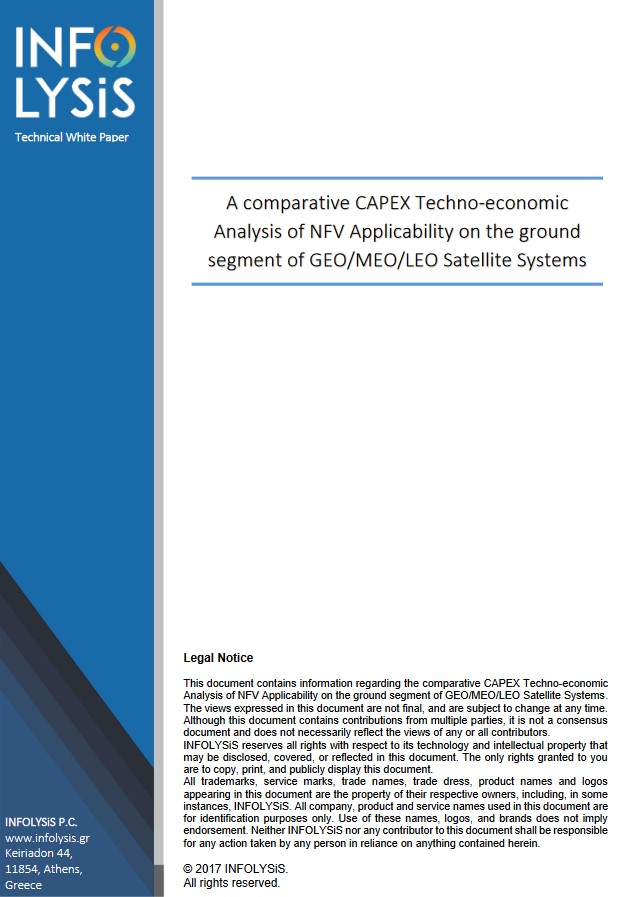In EuCNC 2018 in Ljubljana, I had the opportunity to present the ICT-17 5GENESIS project in a special session of the 5G-PPP for the phase 3 projects and as an introduction to the forthcoming ICT-19-2019 call “Advanced 5G validation trials across multiple vertical industries”. 5GENESIS will provide large scale prototype 5G testbeds in five European cities (Athens, Limassol, Malaga, Berlin and Surrey). These testbeds will be used by representatives of relevant business sectors (e.g. media and entertainment, e-health, automotive etc.) to validate the technological advances that 5G brings to these markets.
In this context, the main goal of 5GENESIS will be to validate 5G KPIs for various 5G use cases, in both controlled set-ups and large-scale events. This will be achieved by bringing together results from a considerable number of EU projects as well as the partners’ internal R&D activities in order to realise an integrated End-to-end 5G Facility.
The 5GENESIS Facility, as a whole, will:
- Implement and verify all evolutions of the 5G standard, via an iterative integration and testing procedure;
- Engage a wide diversity of technologies and chain innovations that span over all domains, achieving full-stack coverage of the 5G landscape;
- Unify heterogeneous physical and virtual network elements under a common coordination and openness framework exposed to experimenters from the vertical industries and enabling end-to-end slicing and experiment automation; and
- Support further experimentation projects, in particular those focused on vertical markets.
The five platforms of the 5GENESIS Facility, and their main features/orientation, are:
- The Athens Platform. An edge-computing-enabled shared radio infrastructure (gNBs and small cells), with different ranges and overlapping coverage that are supported by an SDN/NFV enabled core, to showcase secure content delivery and low latency applications in large public-events.
- The Málaga Platform. Automated orchestration and management of different network slices over multiple domains, on top of the 5G NR and fully virtualised core network to showcase mission critical services in the lab and in outdoor deployments.
- The Limassol Platform. Radio interfaces of different characteristics and capabilities, combining terrestrial and satellite communications, integrated to showcase service continuity and ubiquitous access in underserved areas.
- The Surrey Platform. Multiple radio access technologies that can support massive Machine Type Communications (mMTC), including 5G NR and NB-IoT, combined under a flexible Radio Resource Management (RRM) and spectrum sharing platform to showcase massive IoT services.
- The Berlin platform: Ultra dense areas covered by various network deployments, ranging from indoor nodes to nomadic outdoor clusters, coordinated via advanced backhauling technologies to showcase immersive service provisioning.

 As it was expected, while the user is moving away from the center of the LED light, the lx value (and respectively the SNR value) is decreasing, which means that the reception quality drops and the http-streaming video service from normal playback is starting to appear occasional pauses. Gradually the lx value reaches to zero as the users is located in a dead reception zone between two successive lamps, where the video service provision is paused/interrupted (packet loss reaches 100%/blue line). The video service playback re-initiates when the user reaches the coverage area of the next VLC transmitter, since all the lamps are broadcasting the same content, and therefore the distance from the next light source is decreasing and therefore the lm value and the SNR value are gradually increasing.
As it was expected, while the user is moving away from the center of the LED light, the lx value (and respectively the SNR value) is decreasing, which means that the reception quality drops and the http-streaming video service from normal playback is starting to appear occasional pauses. Gradually the lx value reaches to zero as the users is located in a dead reception zone between two successive lamps, where the video service provision is paused/interrupted (packet loss reaches 100%/blue line). The video service playback re-initiates when the user reaches the coverage area of the next VLC transmitter, since all the lamps are broadcasting the same content, and therefore the distance from the next light source is decreasing and therefore the lm value and the SNR value are gradually increasing.